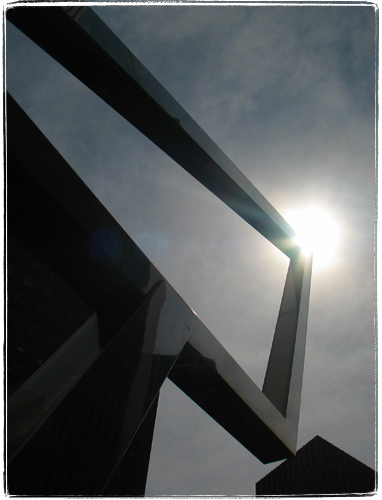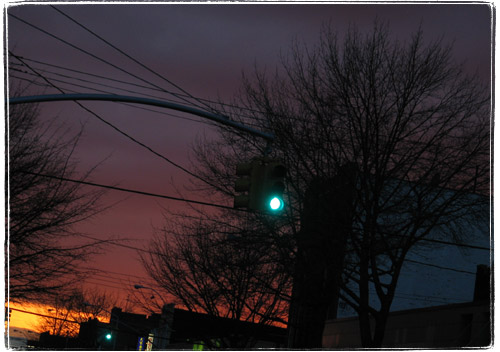My former co-worker, he of the Planet of the Geeks, asked me a few questions about selecting a telescope recently, and inderectly inspired me to write this post.
Backyard astronomy is one of the most popular geek pastimes. Like espresso making and photography, it’s one of those hobbies where there’s basically no limit on how badly it makes you want to break your budget. There are such gadgets, oh such gadgets…
The rule of thumb in purchasing a telescope is the same as in purchasing an espresso machine – “poor people can’t afford to buy cheap things.” I am not going to write a telescope purchasing advice post though – enough is written on the subject already.
What am I going to write about is the motivation for purchasing telescopes, eyepieces and other stuff. Really, why should you want to buy these expensive toys, drag your butt out into the cold of the night and crouch in uncomfortable position when there’s Hubble Space Telescope and Astronomy Picture of the Day?
Well, first off, seeing a high resolution picture of Saturn taken by a billion dollar space probe somehow pales in comparison with seeing a blurry tiny speck of an image produced by the cheapest telescope. There’s something magical about having the actual photons reflecting of or generated by the celestial body hitting your retina. These almost physical things travelled over ridiculous distances end up hitting your eye forming an image. The feeling is completely different.
Most scope advice sites tell beginners to not even think about astrophotography. My advise to you is to disregard this. Astrophotography is one of the most rewarding things you can do. That picture won’t be of Hubble quality, but it will be yours. A detailed mosaic of the lunar surface makes a great wall hanging or wallpaper. Again, there’s something different in the pictures that you took. People don’t stop snapping pictures of New York just because they can buy professionally made postcards, do they? If you do buy a telescope, buy one that can be made suitable for astrophotography.
Note
I don’t own a serious telescope right now, and never did. All I have is an old Celestron C90 spotting scope (actually mine is an older model that looks rather differently. The idea was to use it later as a telephoto lens (which I did) and a spotting scope for a big telescope that I ended up not buying. Even with that, I managed to take this photo of the Moon.

Besides subjective experiences, there’s a very good reason to own your own gear and doing your own observations. The space is so huge that there’s still room for a complete amateur to make a discovery or just gather some useful scientific data.
The humblest in amateur research is doing Cepheid variable observations. You basically record how certain stars change their brightness from night to night. It’s painstaking and boring work, but it helps to chart galactic distances or something to that effect.
On the plus side, while looking for Cepheids, you can spot a nova or even a supernova. Nova discoveries by amateurs are not super frequent, but are not too rare either. Here’s one, for instance.
Another mainstream field of armature research is occultation recording and timing. Occultation is a transit of one celestial body behind another. For instance, you can watch Saturn disappear behind Moon’s disk and reappear again. By watching a bright star or planet pass behind the Moon, for instance, you can get some interesting information. First of all, by recording the time you can help calculate Moon’s orbit more precisely. Secondly, yo can see lunar terrain backlit, seeing outlines of mountains. In theory, something can be learned about atmosphere of planets and maybe even moons by watching occultations, but that requires some serious gear. In any case, space probes do a much better job.
Blah blah, meticulous observations by amateurs, blah, tiny little pieces of data, blah. Let’s kick it up a notch, crank up the hubris. Remember that Simpsons episode where Bart discovered a comet? Although the chances are low and the competition is fierce, it is possible for an amateur to discover a comet. And comets are the only things that are named after their discoverers these days.
They don’t let you name asteroids, but discovering one is rather cool. If you find an Earth orbit crossing one, you can _potentially_ join the Planet Savior club. They’ll name stuff after you then.
If that’s not enough, start looking for a planet. They won’t let you name it too, but putting “found a planet” on your resume is very cool. Of course, there is a lot of debate if those huge Trans-Neptunian objects such as Pluto and 2003 UB313 aka Xena are really planets. I say the more the merrier. Xena is magnitude 19 by the way, which is bright enough to be seen in high end amateur telescopes in dark sky conditions.
There’s also the category of looking for major stuff that most probably isn’t there. Searching for planet Vulcan is likely to be futile, as Einstein explained away Mercury’s orbit.
Major planets probably have way more satellites than are catalogued. It’s probably impossible, but maybe the Moon might have one too? In any case, hunting for satellites might be fun.
Also, you have the Nemeses theory. It might just be that good ol’ Sol is really a binary star (binary stars are much more common than single ones) – Nemeses, it’s partner is a brown dwarf beyond the Oort Cloud. It’s possibly bright enough to be detected with an amateur scope. Now, that would be a discovery.
How do you look for all of that stuff? Well, you mostly line up and “blink” photographic images of the same piece of sky taken at different times. Most stars are so far away that they don’t change their positions. Planets, asteroids and satellites have larger proper motion and appear to move in blinked photos. A lot of them will be artificial satellites and already discovered stuff, but hey – you never know. Public astrophotographs are available for this sort of thing, and there are ways to cheaply rent time on professional telescopes over the web, but it’s not as fun and generating your own.
Even if your scope sucks and you live in a very light polluted place, you can still look for transient Lunar phenomena. Maybe you’ll see some aliens while you are at it.




